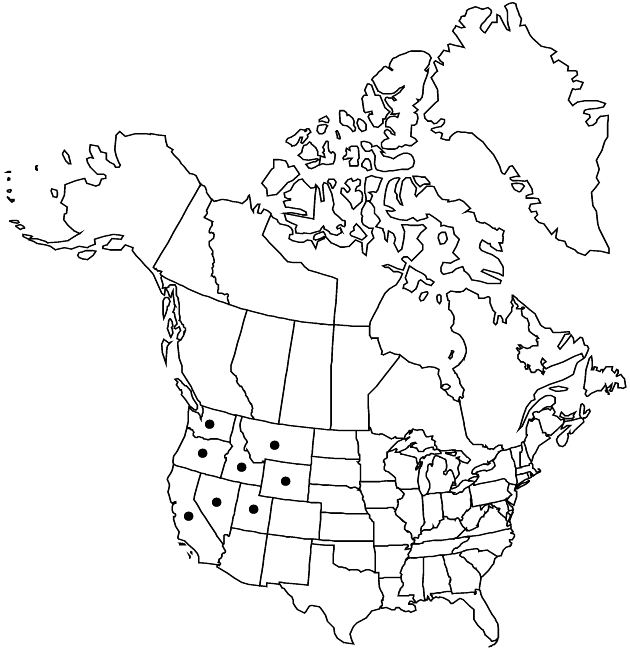Eriophyllum lanatum var. integrifolium
Univ. Calif. Publ. Bot. 9: 378. 1921.
Shrubs (multistemmed; taprooted). Proximal leaves alternate; blades cuneate, oblanceolate, or obovate, margins entire or ± toothed to lobed (lobes 3–5), plane or slightly revolute, faces (persistently) woolly. Heads usually borne singly. Peduncles mostly 3–10 cm. Involucres 6–10 mm diam. Ray florets (5–)8(–10); laminae 6–12 mm. Cypselae (2.3–)3–4(–5) mm; pappi (0.3–)0.5–1(–2) mm (scales equal or unequal). 2n = 16, 32, 48, 64.
Phenology: Flowering Jun–Aug.
Habitat: Dry or rocky sites, sagebrush, conifer forests alpine fell fields
Elevation: 1200–3500 m
Distribution

Calif., Idaho, Mont., Nev., Oreg., Utah, Wash., Wyo.
Discussion
L. Constance (1937) sorted the regional races of this complex, some taxonomically recognized, into five geographic groups. P. A. Munz (1959) referred high elevation populations in California and adjacent states to var. monoense (Rydberg) Jepson. Variety integrifolium intergrades with var. grandiflorum. Constance and also L. Abrams and R. S. Ferris (1923–1960, vol. 4) applied var. cuneatum (Kellogg) Jepson to individuals of what appear to be vars. grandiflorum × integrifolium parentage as well as to variants of vars. achillioides, grandiflorum, and integrifolium. Variety integrifolium intergrades with var. lanatum in Oregon and Washington near the Columbia River. The intermediate populations that have been analyzed are polyploid (J. S. Mooring 2001).
Selected References
None.